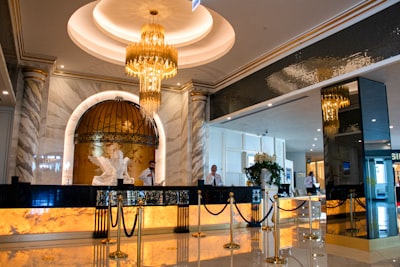Overview
The luxury hospitality industry in China encompasses high-end hotels and resorts that provide premium accommodations, services, and amenities to affluent domestic and international guests. This sector is characterized by five-star hotels operated by both global brands and prominent domestic chains, offering personalized services, fine dining, and opulent settings.
Historical Development
The emergence of China's luxury hotel industry began in earnest in the late 20th century, coinciding with the country’s economic reforms and opening to international tourism. International hotel chains such as Marriott, Hilton, and InterContinental established flagship properties in major cities like Beijing, Shanghai, and Guangzhou. Simultaneously, domestic luxury brands such as Wanda Hotels & Resorts and Jinling also developed, catering to the rising affluent middle and upper classes.
Market Features
- Clientele: Both international business travelers and increasingly affluent Chinese tourists.
- Service Standards: Emphasis on exclusivity, privacy, and high-quality, personalized service.
- Facilities: Extensive amenities, such as fine dining restaurants, spas, fitness centers, and event spaces.
- Pricing: Room rates and banquet services frequently exceed several thousand yuan per night or event, reflecting premium positioning.
Economic and Social Influences
The luxury hospitality sector in China has been influenced by macroeconomic conditions, government policies (including anti-corruption campaigns), and shifting consumer preferences. Economic slowdowns and rising prudence among consumers have prompted changes in the operational strategies of luxury hotels, including diversification into more accessible products.
Recent Trends
- Downward Pressure: A slowing national economy and reduced business travel have affected occupancy rates and banquet revenues.
- Innovation: To maintain profitability, luxury hotels have implemented creative responses such as selling budget-friendly meal boxes and adopting street food offerings, appealing to cost-conscious consumers while utilizing existing culinary expertise.
- Domestic Tourism: The COVID-19 pandemic led to greater reliance on domestic travelers, with hotels adapting services and promotions accordingly.
Challenges and Outlook
The industry faces challenges from economic uncertainty, increased competition, and changing guest expectations. Continued adaptation, innovation, and customization of services are expected to remain essential for the survival and growth of China’s luxury hospitality sector.

Comments
No comments yet. Be the first to comment!